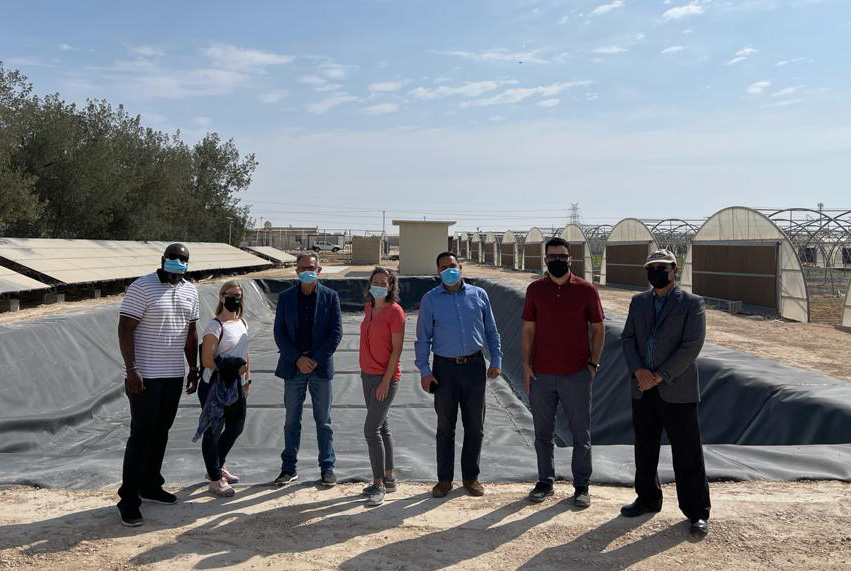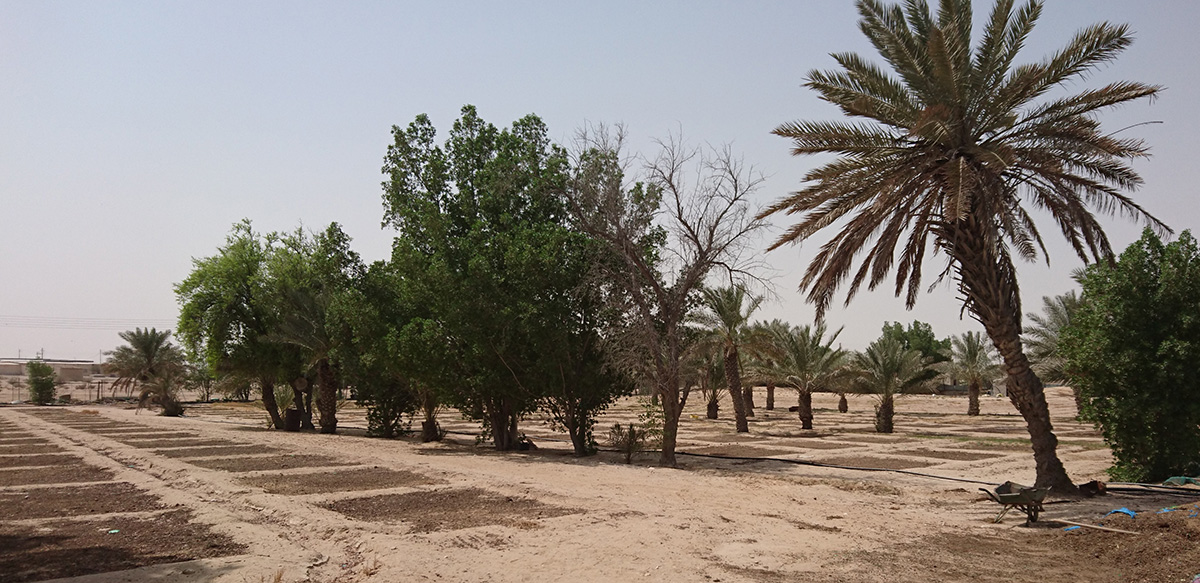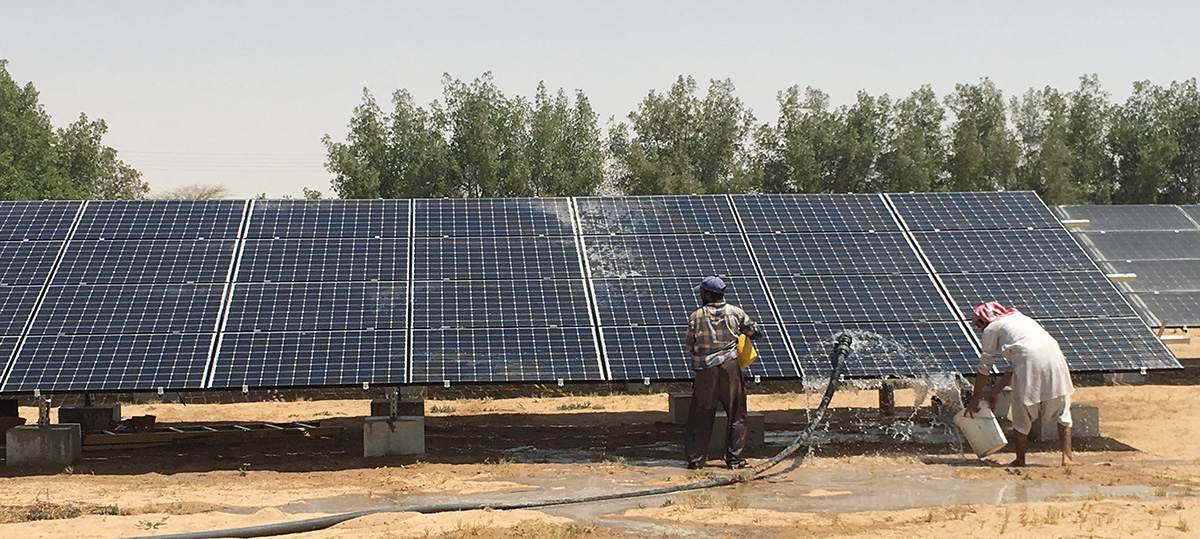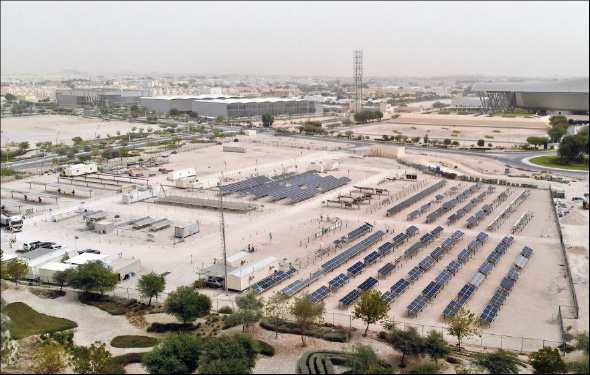Renewable energy microgrids are gaining a toehold in one of the world’s most fossil fuel-rich countries — Qatar. We recently spoke with Qatar Environment and Energy Research Institute (QEERI) Senior Scientist and Project Lead for Advanced Power Systems and Smart Grids, Mohd Zamri Che Wani. He discussed his various innovative projects including a microgrid to power a desert farm and his experiments with microgrids in a desert test bed at the Hamad Bin Khalifa University (HBKU).

Qatar currently ranks third in world gas reserves and 14th in oil production. Mohd Zamri Che Wanik, who holds a doctorate of engineering in power systems and distributed energy resources from the University of Duisburg Essen in Germany, leads the effort to introduce hybrid power technology and test different microgrid configurations through his work with QEERI. Originally from Malaysia, Wanik previously worked for a utility company that used UL Solutions HOMER® software as one of the tools in designing microgrids for some of Malaysia’s 878 islands.
QEERI desert farm is pioneering microgrids in Qatar
When QEERI created the original business case for microgrid research in Qatar, Wanik said they targeted the country’s 1,300 desert farms. Most are off-grid and scattered in remote rural areas where constructing power lines would be prohibitively expensive, so he said these farms typically use diesel generators. However, solar is an excellent energy option in Qatar’s sun-drenched desert climate. Eventually, QEERI found a farmer willing to host a test microgrid, especially since it would be designed and built by QEERI.
Qatar farms mainly raise vegetables and livestock — sheep, goats, chickens and camels. While farmers have traditionally cultivated vegetables outdoors during the winter, Wanik said that many farmers are now installing greenhouses to achieve a longer production cycle. The greenhouses require energy, partially to their cooling systems when the temperature is too high for farming. Additional electricity loads for desert farms include small-size reverse osmosis-based water desalination plants and pumps for groundwater. These, along with treated wastewater, comprise Qatar’s primary water sources.

Wanik believes the QEERI desert farm system is one of the first microgrids in the Middle East. He began by modeling the project using HOMER Pro software to determine the optimal combination of generation resources, given the farm’s load profile and the region’s solar potential. Based on the analysis, Wanik and his team settled on a ground-mounted 35-kilowatt (kW) solar photovoltaic (PV) array combined with an 82-kilowatt hour (kWh) battery and backup diesel generation.
The ground-mounted solar PV has been installed and commissioned. Wanik said the system was designed to supply 100% of the farm’s electricity requirements. However, the farmer later decided to install 26 additional greenhouses, which will require adding a minimum of 90 kW solar PV. Wanik and his team are still working on installing the remaining solar panels and batteries.

Testing microgrid performance in challenging desert conditions
QEERI also has an open-area desert testing facility where it subjects PV panels and different types of new green technologies to harsh environmental conditions. Wanik said battery manufacturers are eager to discover how their energy storage systems will perform in the sweltering heat while subjected to dust, sand and strong wind. Wanik also said QEERI recently commissioned a test microgrid at the facility. He and his team are interested in experimenting with different microgrid configurations and control systems, as well as other technology components that make up the “smart” grid of the future.

QEERI is open to collaborations with industry partners to develop pilot projects and scalable approaches they can implement, integrate and deploy in desert environments. Wanik is also proud to be able to provide the country’s engineering students with an internship program that offers experience with renewable-based energy technologies and grid innovations that will power the oncoming energy transition.

UL Solutions’ HOMER® Pro is the leading pre-feasibility design software for modeling microgrids, with more than 250,000 users in more than 190 countries. It provides engineering and financial analyses of remote, off-grid and grid-tied complex distributed energy systems, helping reduce financial risk for owners and developers. Learn more about HOMER Pro and download a complimentary trial.
